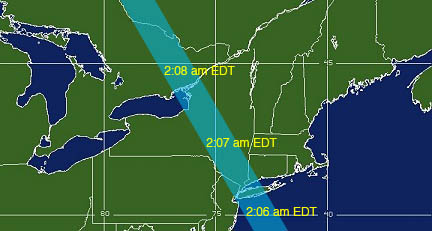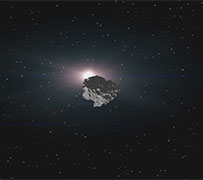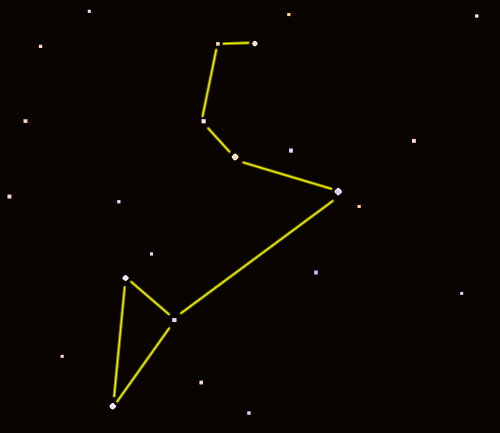History will be made during the overnight hours of March 19/20, 2014 when a bright star will briefly disappear over the skies of parts of New York, New Jersey, Connecticut, Ontario and Quebec. The star, which is much larger than the Sun, is called “Regulus” and is the brightest star in the Name A Star Live constellation “Leo” (the Lion). Never before has such a bright star disappeared and reappeared over such a highly populated area.
This rare astronomical event can be viewed – weather permitting – by people within a roughly 68 mile (109 km) wide band stretching from the New York City area northwest into Canada.

The star’s not vanishing into a black hole, exploding as a supernova, being destroyed by aliens or anything like that! Rather, a large asteroid (named “Erigone”) will pass in front of Regulus, temporarily blocking the star’s light – much like what happens when the Moon passes in front of the Sun during a solar eclipse.

The shadow cast by the star and asteroid will travel northwest from The Big Apple into Canada at approximately 11,400 miles per hour (18, 347 km per hour). Observers should see the star disappear for anywhere from a fraction of a second to as much as 14 seconds before the star reappears. Observers in the New York City area should see the star disappear at 2:06 am EDT. Observers between roughly Binghampton, NY and Albany, NY should see the star disappear at 2:07 am. Observers just to the southwest of Ottawa should look for the star to disappear at 2:08 am.
The following 30-second animation illustrates what Leo looks like, where Regulus is within Leo, and the disappearance and reappearance of Regulus. Note that while this animation repeats itself, over the night of March 19/20 the star will disappear and reappear only one time.

Can you see Leo from your community?
While Leo is visible from many urban areas, it’s possible your nighttime skies could be so bright from your city’s lights that you cannot see Leo or even the bright star Regulus. So before setting your alarm for 2 am, check to make sure you can see Leo from your location – no sense in ruining a good night’s sleep for nothing! Go outside around 8 or 9 pm EDT on any evening with a clear sky between now and March 20 and look for Leo toward the South-Southeast. The constellation will be oriented as illustrated below during the early evening hours in March. If you have trouble finding Leo, consider contacting a local astronomy club, planetarium or astronomical observatory.

Where Leo will be at 2 am EDT March 20
Look for Leo toward the South-Southwest during the early morning hours of March 20. It will be oriented in your night sky as illustrated in the animation above.
Shameless Plug! A planisphere — which you can order with our name-a-star gift sets — is a handy, low-cost device for identifying constellations in the night sky. You can also use our Virtual Planetarium™ astronomy software that you can order online and download now!
There’s an app for that!
Erigone, the asteroid, is assumed to be about 45 miles (73 kilometers) wide. But YOU can help astronomers pin down the asteroid’s true diameter! The International Occultation* Timing Association has information on how ‘citizen scientists’ can – by carefully measuring the exact length of time they see the star blink out – help astronomers determine just how large Erigone really is. There’s even a free iPhone/iPad app for timing the occultation. Visit www.occultations.org/regulus2014 for details.
* Note that “Occultation” is a fancy schmancy astronomical term that just means one object in space moves in front of a 2nd object in space so as to temporarily block our view of the 2nd object. So a solar eclipse — where the Moon blocks our view of the Sun — is an example of an occultation.